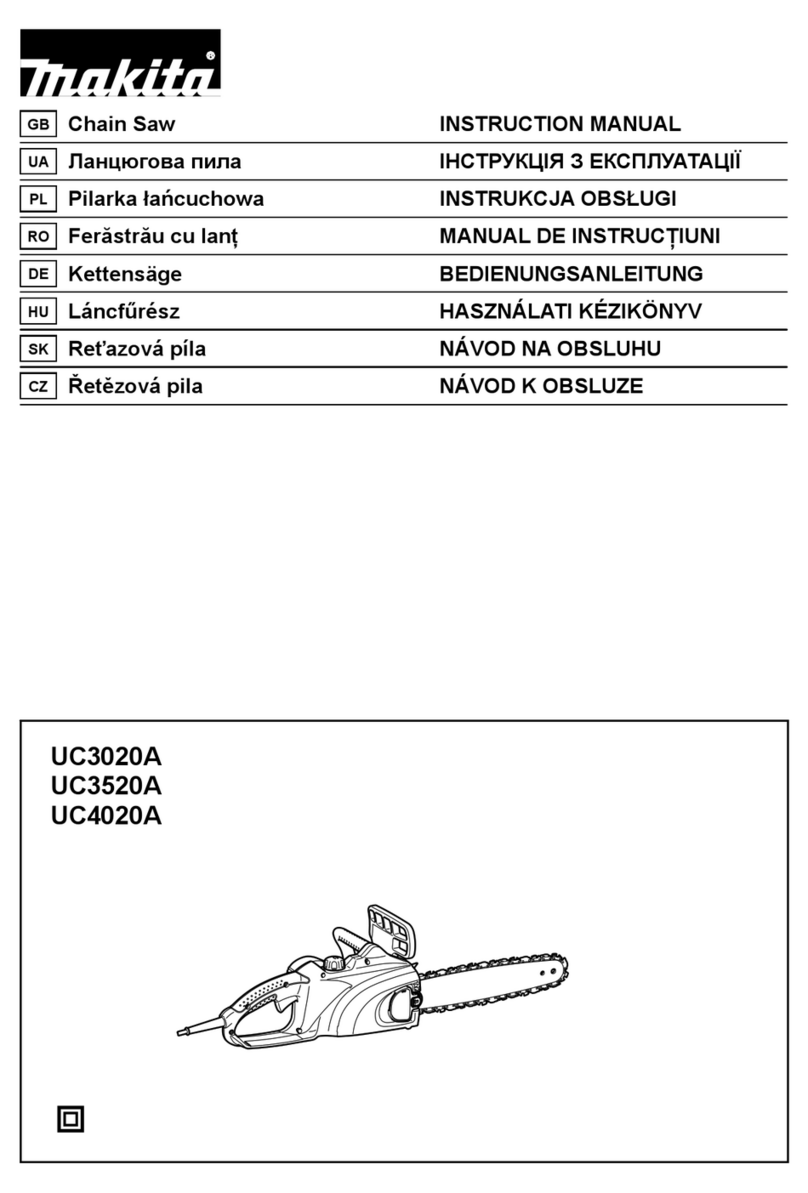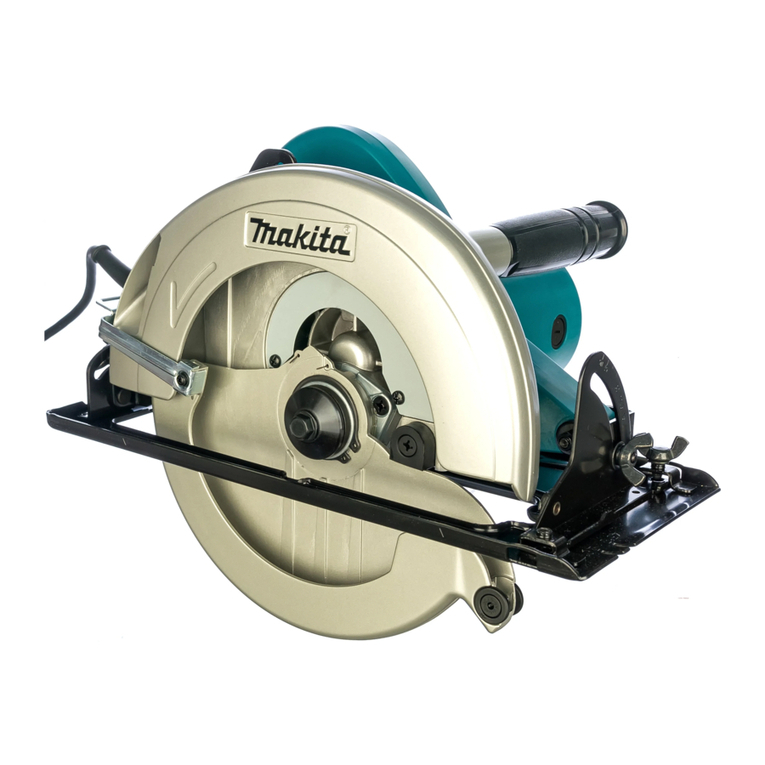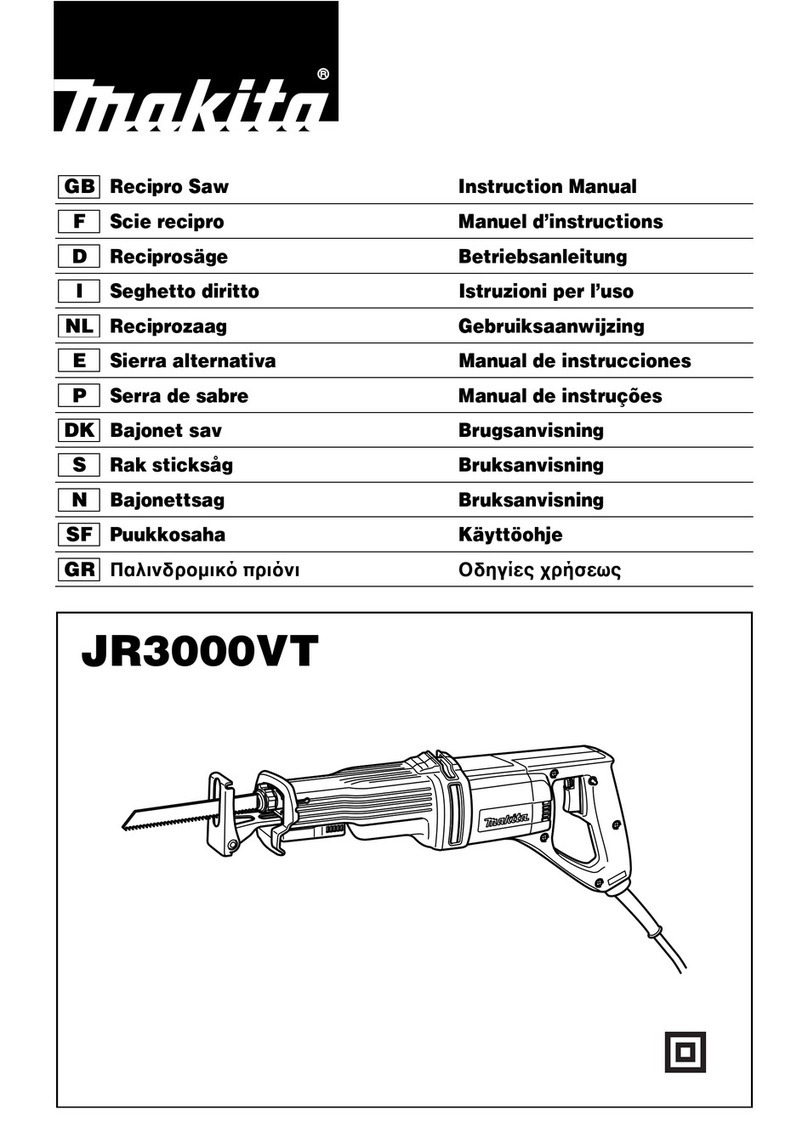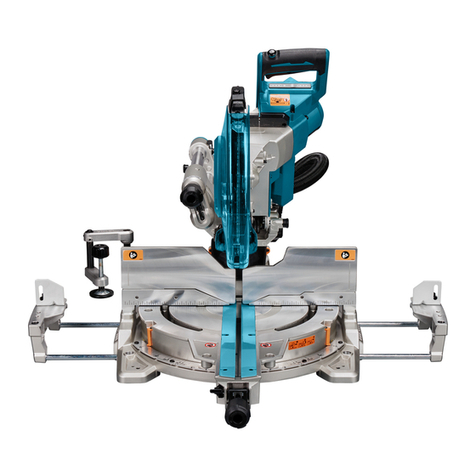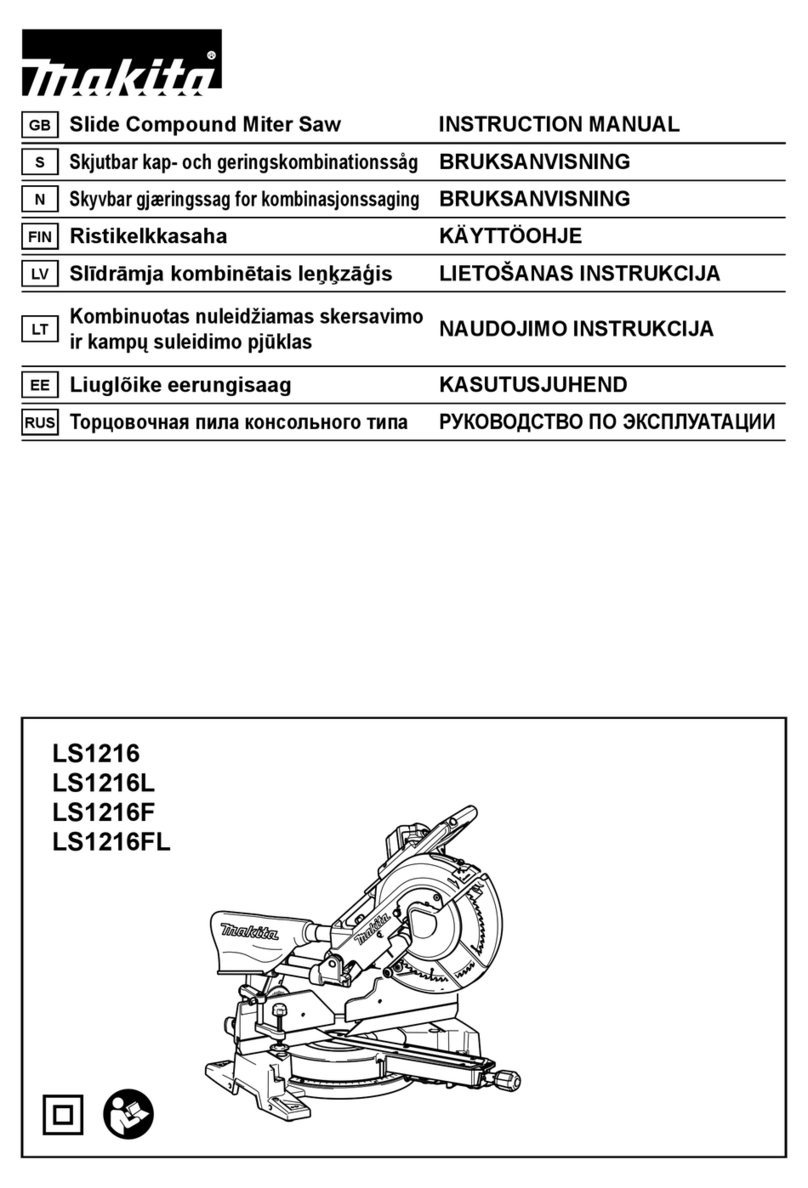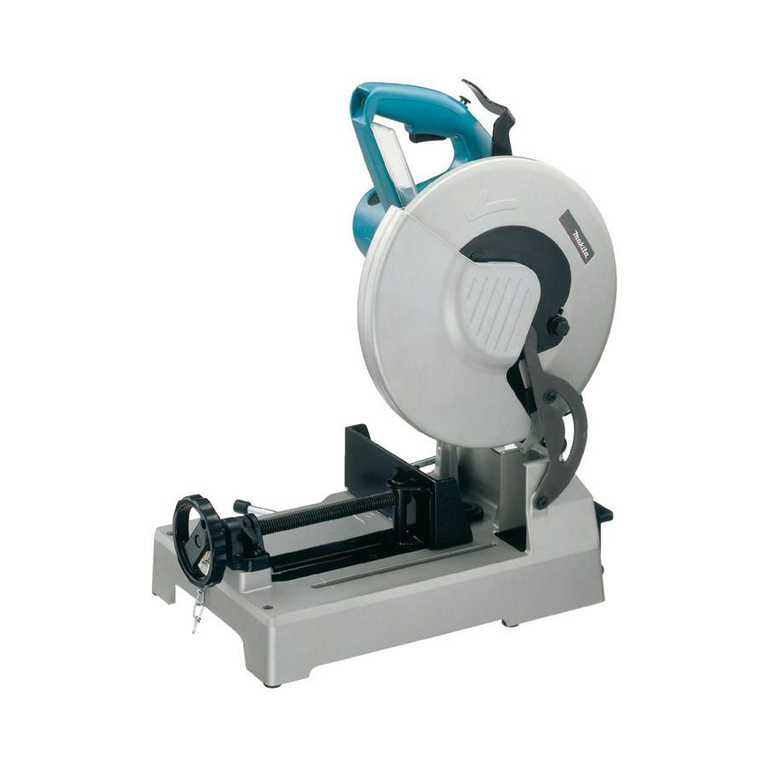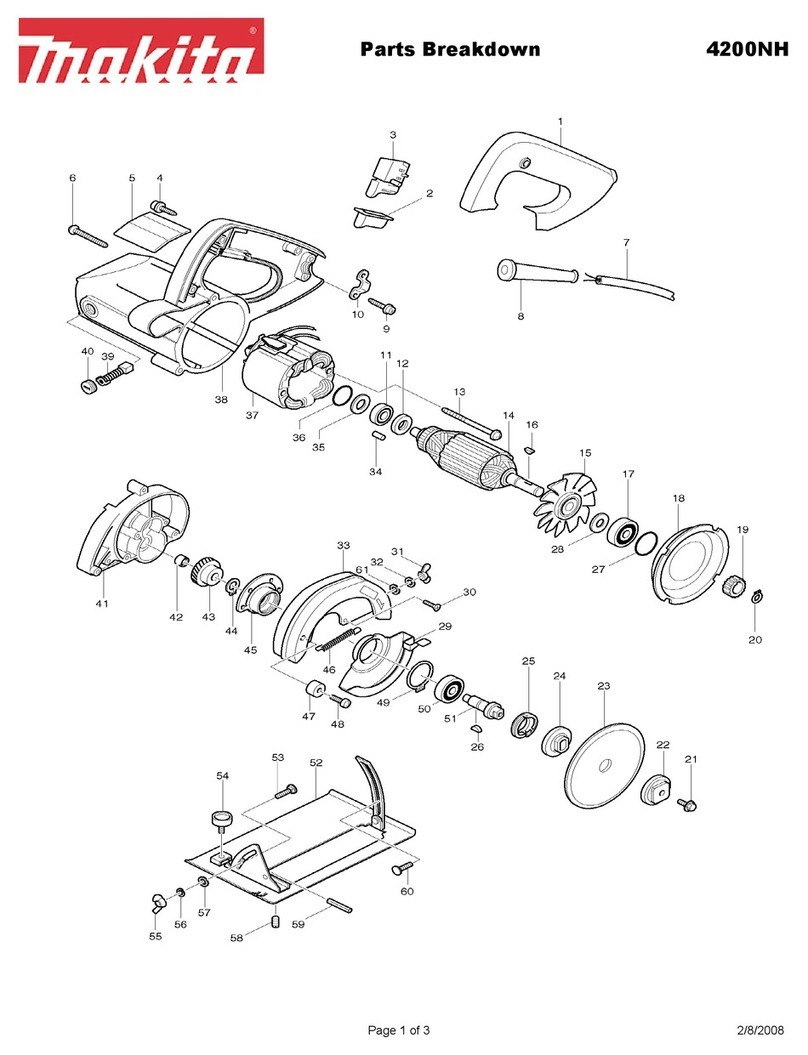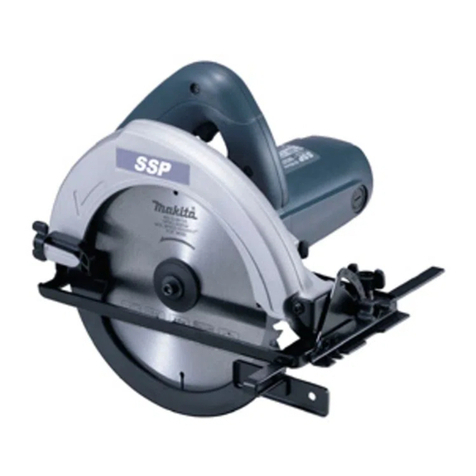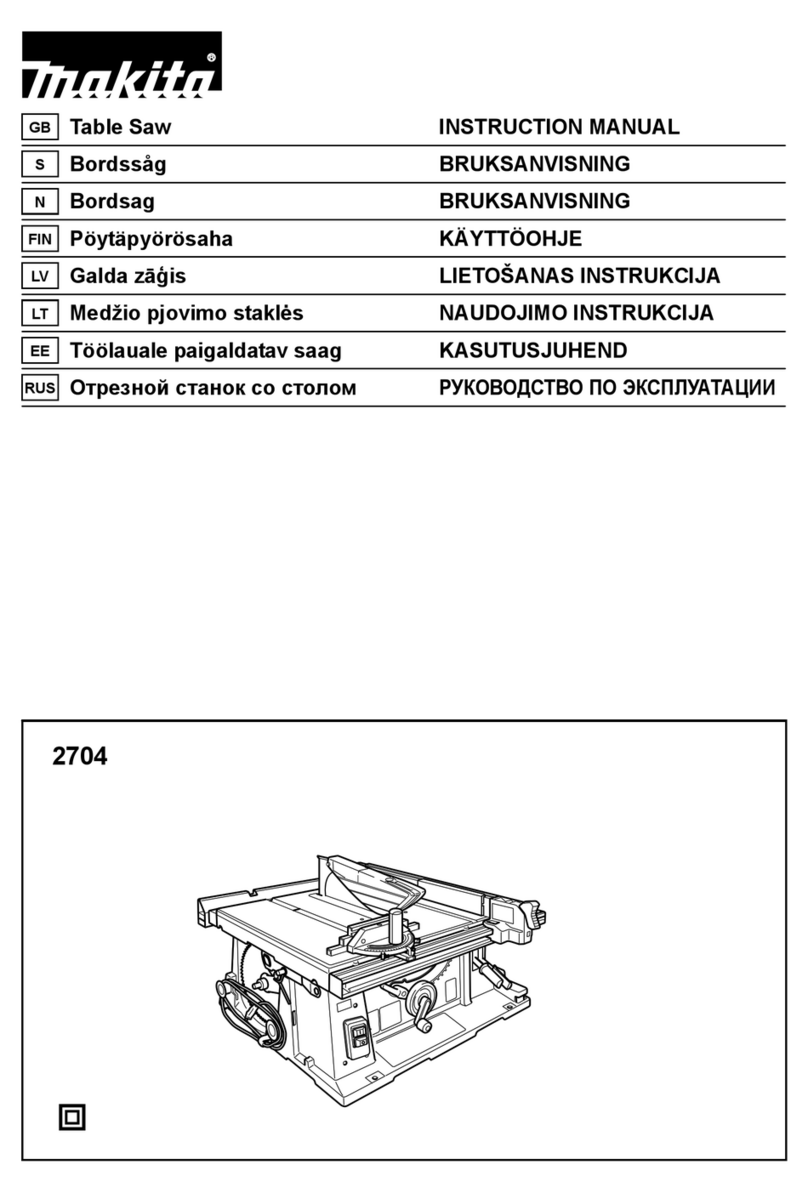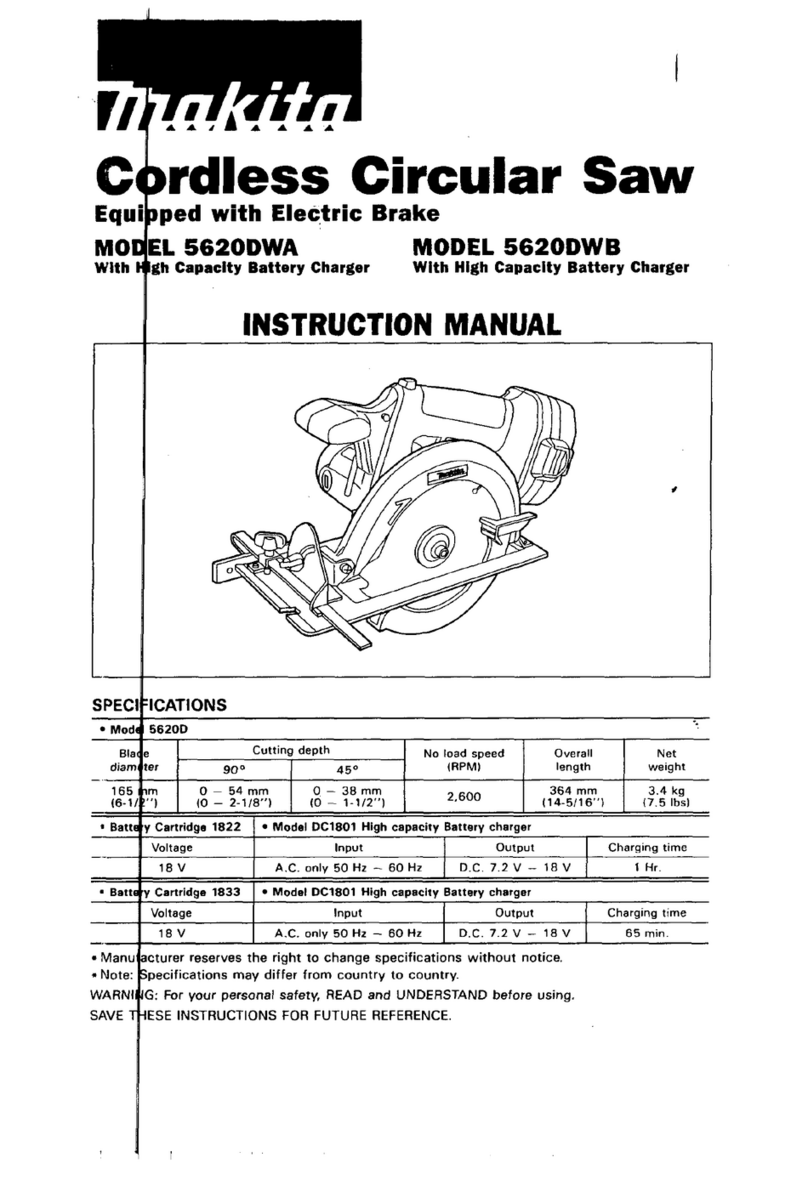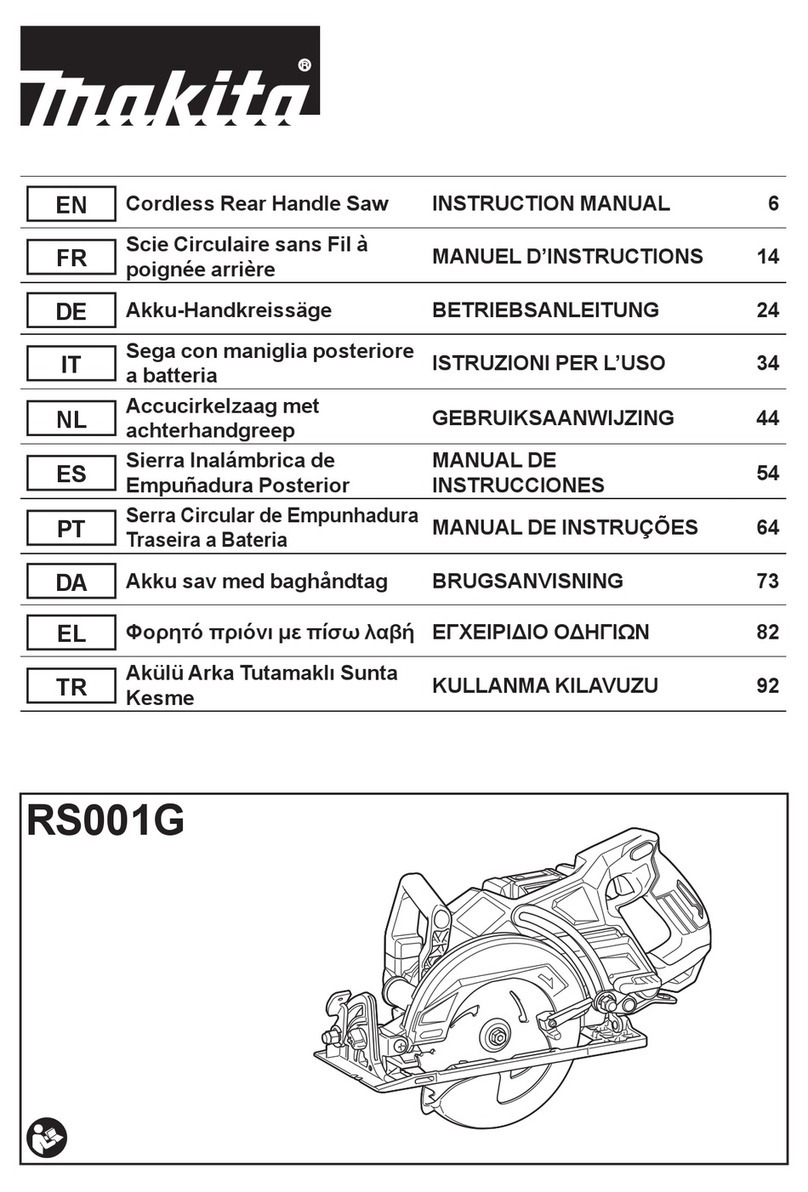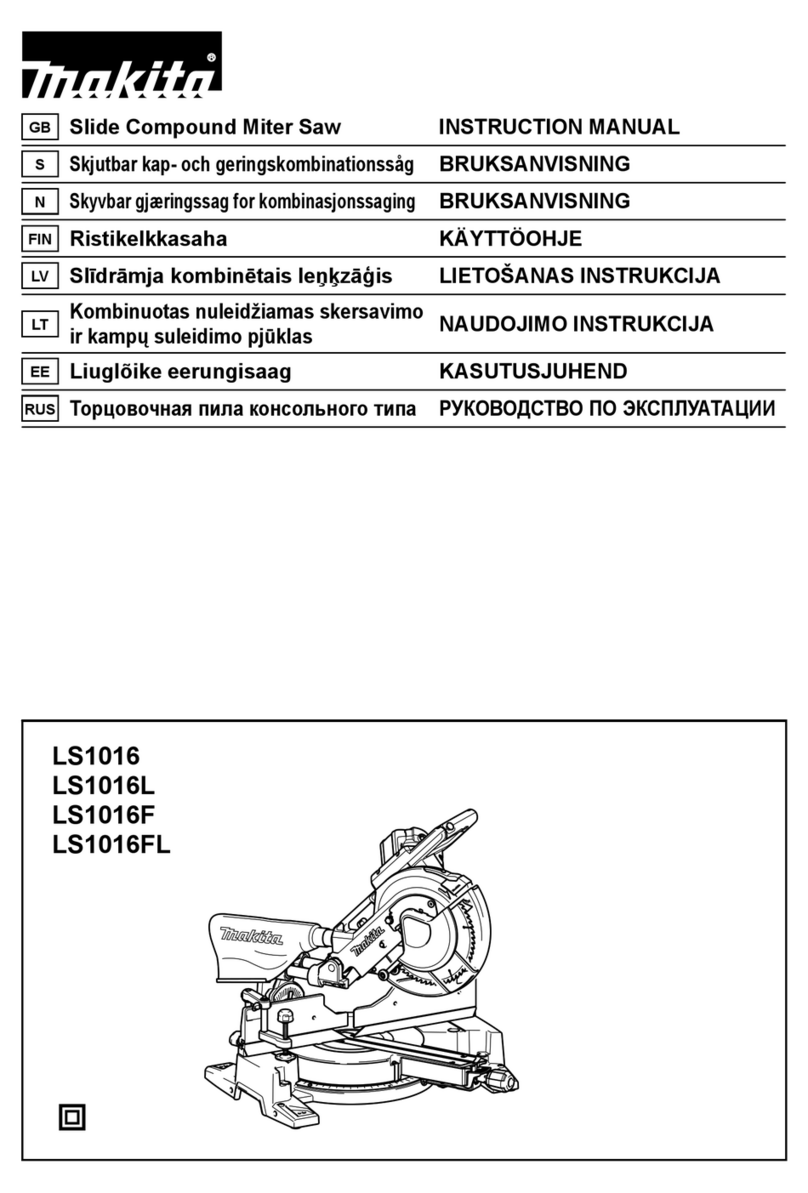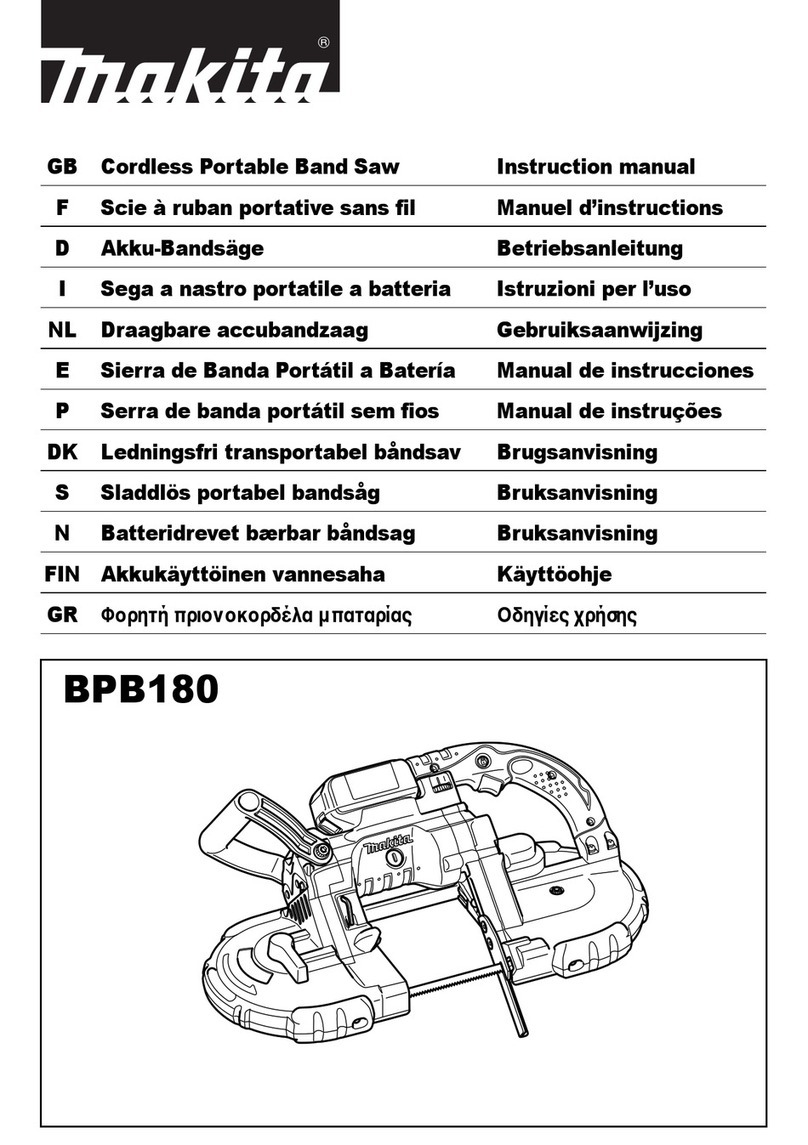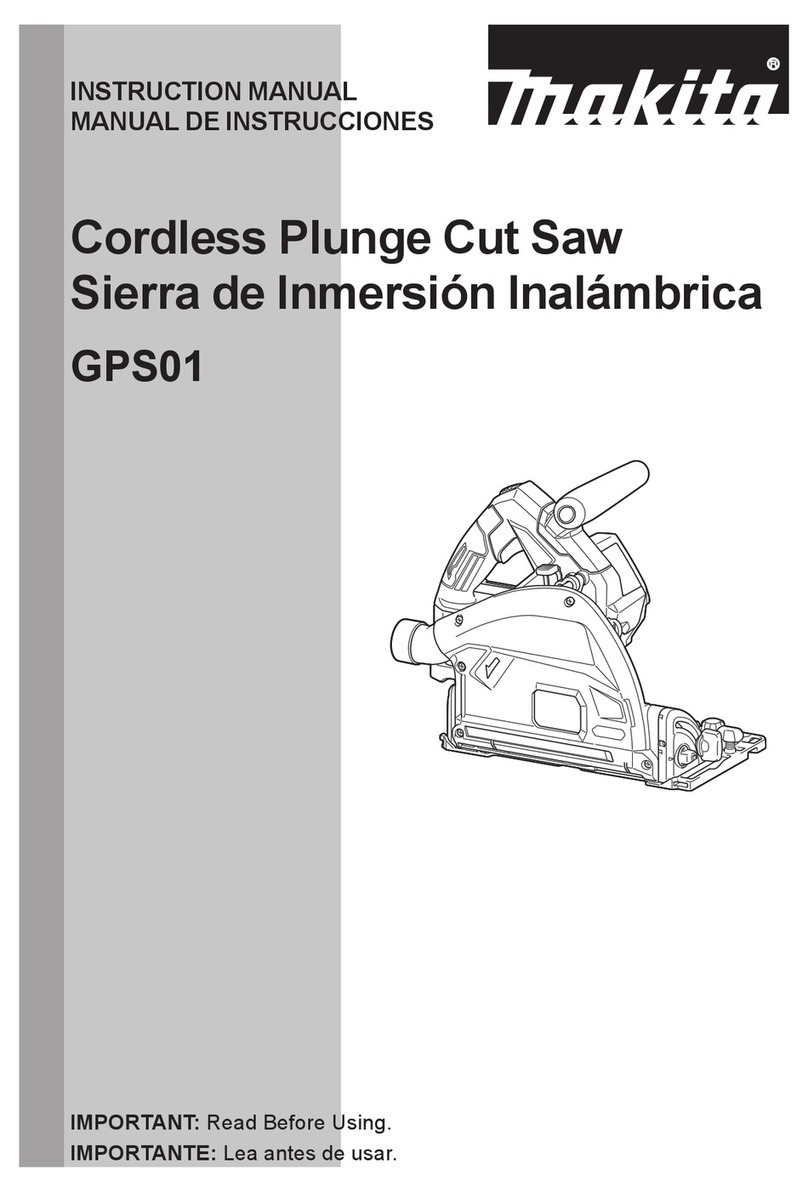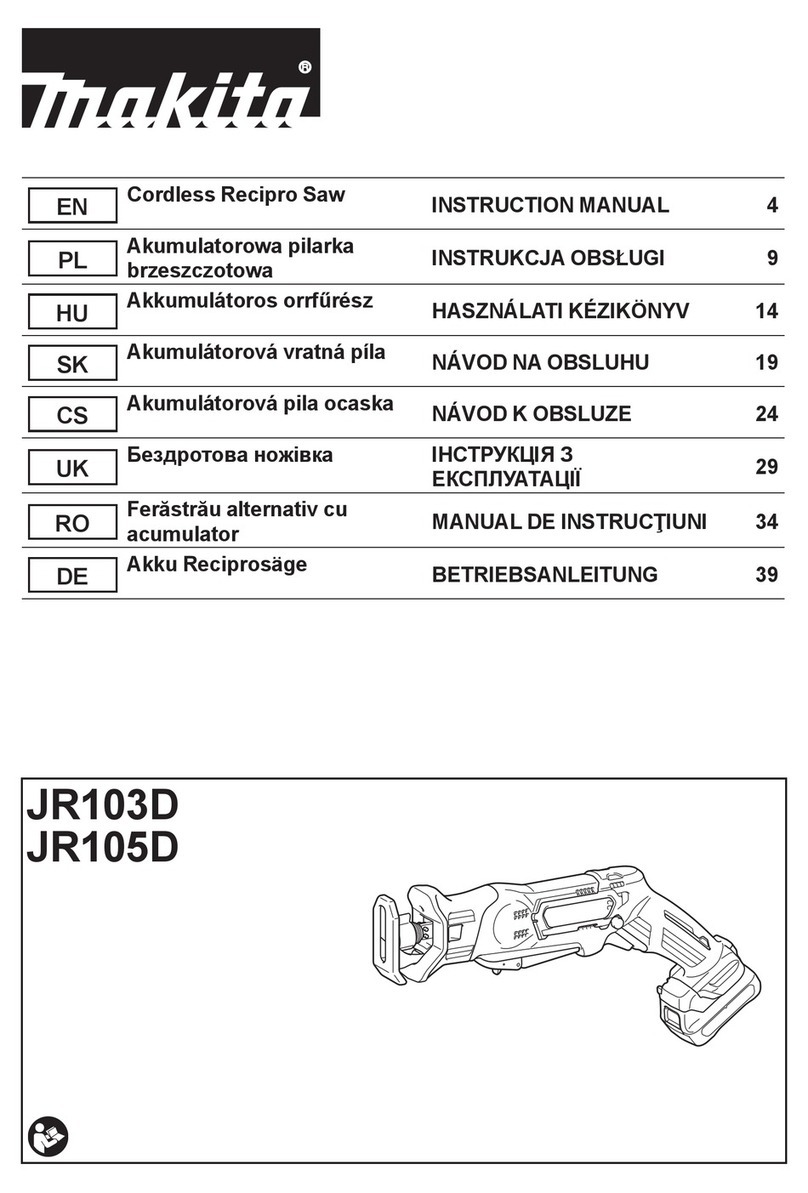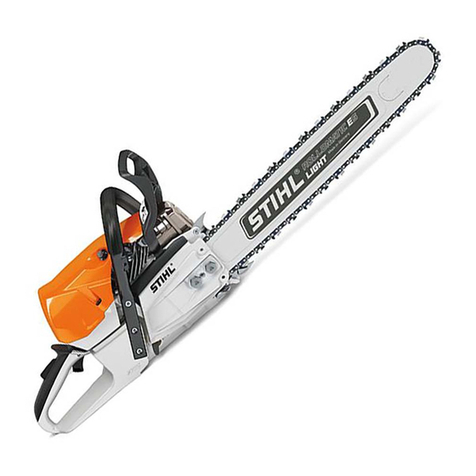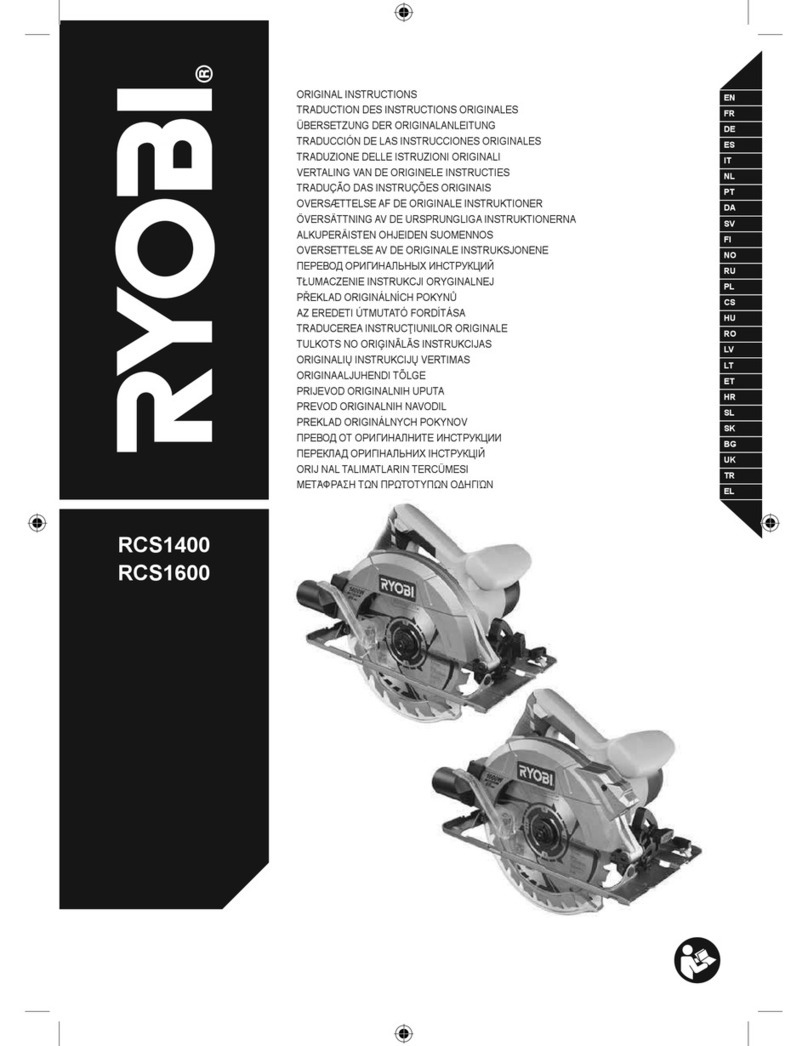
9
pris une drogue, de l’alcool ou un médicament.
Un moment d’inattention pendant l’utilisation d’un
outil électrique peut entraîner une grave blessure.
10. Utilisez des dispositifs de sécurité. Portez
toujours des lunettes de protection. Les risques
de blessure seront moins élevés si vous utilisez des
dispositifs de sécuritétels qu’un masque
antipoussières, des chaussures àsemelle
antidérapante, une coiffure résistante ou une
protection d’oreilles.
11. Prévenez tout démarrage accidentel. Assurez-
vous que l’interrupteur est en position d’arrêt
avant de brancher l’outil. Vous ouvrez toute
grande la porte aux accidents si vous transportez
les outils électriques en gardant le doigt sur la
gâchette ou si vous les branchez alors que
l’interrupteur se trouve en position de marche.
12. Retirez toute clé de réglage ou autre type de clé
avant de mettre l’outil sous tension. Toute clé
laissée en place sur une pièce rotative de l’outil
électrique peut entraîner une blessure.
13. Maintenez une position stable. Assurez-vous
d’avoir une bonne prise au sol et une bonne
position d’équilibre en tout temps. Vous aurez
ainsi une meilleure maîtrise de l’outil en cas de
situation imprévue.
14. Portez des vêtements adéquats. Ne portez ni
vêtements amples ni bijoux. Vous devez
maintenir cheveux, vêtements et gants à l’écart
des pièces en mouvement. Les pièces en
mouvement peuvent happer les vêtements amples,
les bijoux et les cheveux longs.
15. Si des accessoires sont fournis pour raccorder
un appareil d’aspiration et de collecte de la
poussière, assurez-vous qu’ils sont
correctement raccordés et qu’ils sont utilisés de
manière adéquate. L’utilisation de tels accessoires
permet de réduire les risques liés àla présence de
poussière dans l’air.
Utilisation et entretien des outils
électriques
16. Ne forcez pas l’outil électrique. Utilisez l’outil
électrique qui convient au type de travail à
effectuer. Si vous utilisez l’outil électrique adéquat
et respectez le régime pour lequel il a étéconçu, il
effectuera un travail de meilleure qualitéet de façon
plus sécuritaire.
17. N’utilisez pas l’outil électrique s’il n’est pas
possible de mettre sa gâchette en position de
marche et d’arrêt. Un outil électrique dont
l’interrupteur est défectueux représente un danger et
doit être réparé.
18. Débranchez la fiche de la source d’alimentation
et/ou retirez la batterie de l’outil électrique avant
d’effectuer tout réglage, de changer un
accessoire ou de ranger l’outil électrique. Ces
mesures préventives réduiront les risques de
démarrage accidentel de l’outil électrique.
19. Après l’utilisation d’un outil électrique, rangez-le
hors de portée des enfants et ne laissez aucune
personne l’utiliser si elle n’est pas familiarisée
avec l’outil électrique ou les présentes
instructions d’utilisation. Les outils électriques
représentent un danger entre les mains de
personnes qui n’en connaissent pas le mode
d’utilisation.
20. Ne négligez pas l’entretien des outils
électriques. Assurez-vous que les pièces
mobiles ne sont ni désalignées ni coincées,
qu’aucune pièce n’est cassée et que l’outil
électrique n’a subi aucun dommage pouvant
affecter son bon fonctionnement. Si l’outil
électrique est endommagé, faites-le réparer
avant de l’utiliser à nouveau. De nombreux
accidents sont causés par des outils électriques mal
entretenus.
21. Maintenez les outils tranchants bien aiguisés et
propres. Un outil tranchant dont l’entretien est
effectuécorrectement et dont les bords sont bien
aiguisés risquera moins de se coincer et sera plus
facile àmaîtriser.
22. Utilisez l’outil électrique, ses accessoires, ses
embouts, etc., en respectant les présentes
instructions et de la façon prévue pour ce type
particulier d’outil électrique, en tenant compte
des conditions de travail et du type de travail à
effectuer. L’utilisation d’un outil électrique àdes fins
autres que celles prévues peut entraîner une
situation dangereuse.
Utilisation et entretien des outils
alimentés par batterie
23. Avant d’insérer la batterie, assurez-vos que
l’interrupteur est en position d’arrêt. Vous ouvrez
la porte aux accidents si vous insérez la batterie
dans un outil électrique dont l’interrupteur est en
position de marche.
24. Pour recharger, utilisez uniquement le chargeur
spécifié par le fabricant. L’utilisation d’un chargeur
conçu pour un type donnéde batterie comporte un
risque d’incendie lorsqu’il est utiliséavec une
batterie d’un autre type.
25. N’utilisez l’outil électrique qu’avec la batterie
conçue spécifiquement pour cet outil. Il y a
risque de blessure ou d’incendie si une autre
batterie est utilisée.
26. Lorsque vous n’utilisez pas la batterie, rangez-la
à l’écart des objets métalliques tels que
trombones, pièces de monnaie, clés, clous, vis
ou autres petits objets métalliques qui risquent
d’établir une connexion entre les bornes. La mise
en court-circuit des bornes de batterie peut causer
des brûlures ou un incendie.
27. Dans des conditions d’utilisation inadéquates de
la batterie, il peut y avoir fuite d’électrolyte. Le
cas échéant, évitez tout contact avec ce liquide.
En cas de contact accidentel, rincez avec
